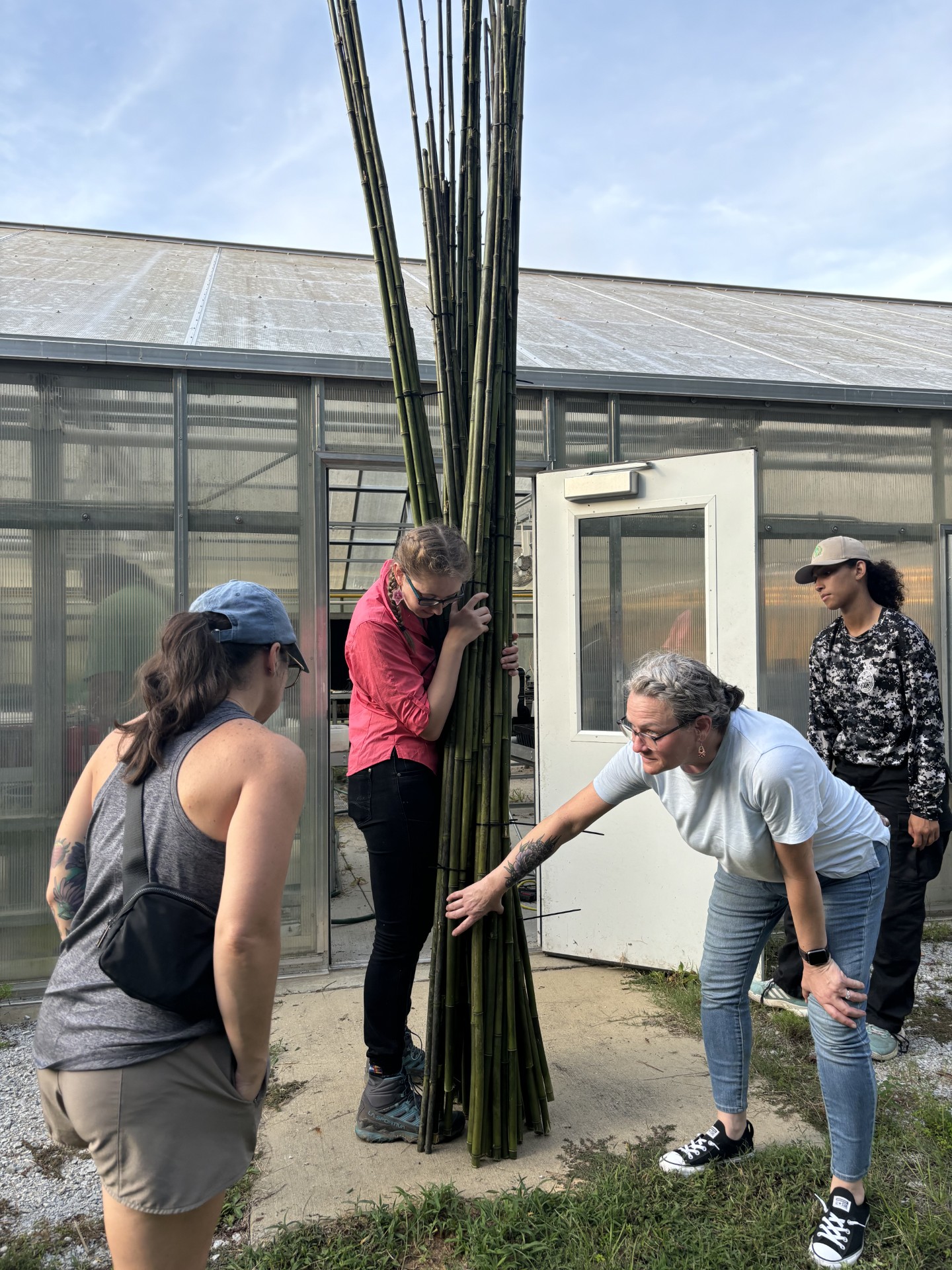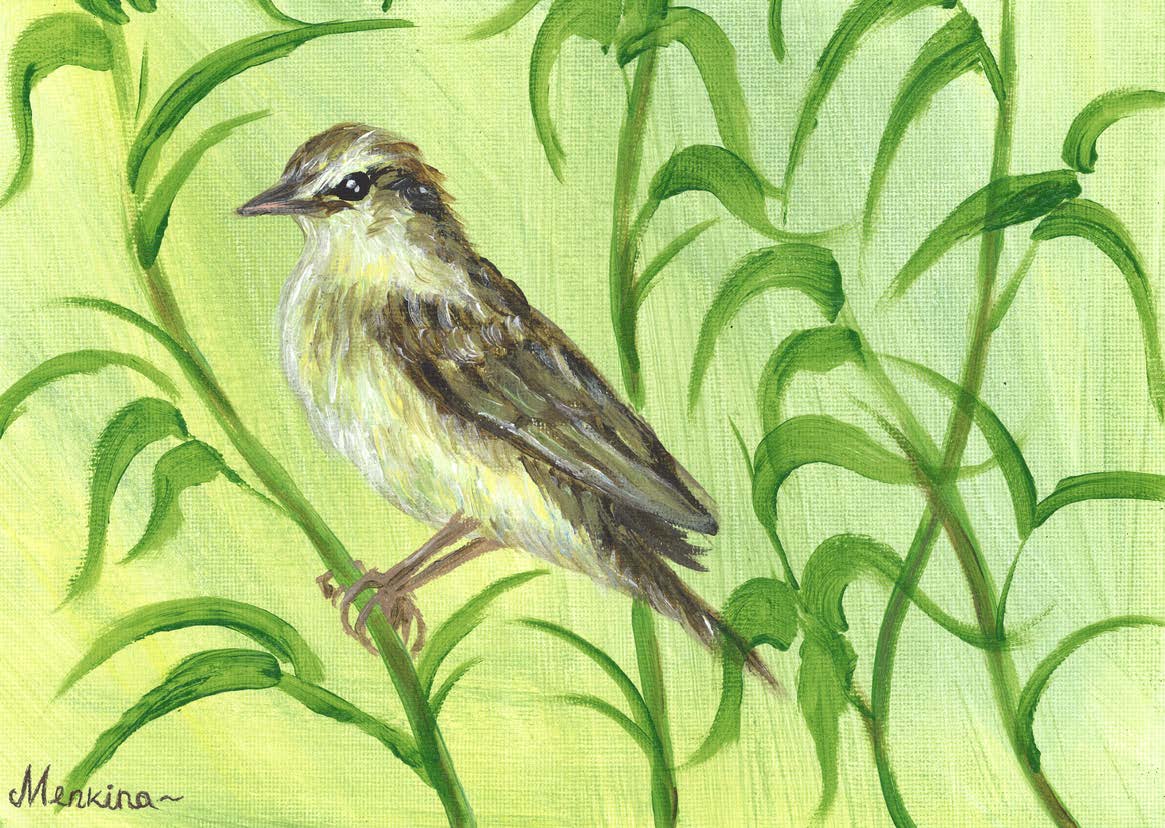Learning to listen to rivercane

This blog is a companion to Mr. Michael Fedoroff’s and Ms. Rose Fisher’s blog entitled The burdens that these baskets carry: A rivercane reflection, also featured in this newsletter.
I’m still learning to listen and hope to get better. Listening is like a language that takes practice and commitment. But learning to become a more fluent listener is a skill I have to cultivate to build stronger relationships and support the SECAS partnership.
In 2021, I attended the Indigenous Approaches to Rivercane Restoration Workshop hosted by the U.S. Army Corps of Engineers Tribal Nations Technical Center of Expertise in collaboration with the Rivercane Restoration Alliance (RRA) and other partners. This three-day virtual event provided a forum in which almost 200 people had the opportunity to learn about both the importance of rivercane to Indigenous communities as well as Indigenous knowledge and perspectives about rivercane science and restoration. And the workshop did exactly what it was meant to—inspire and connect.
Since that workshop, SECAS has worked with partners to help elevate and promote the importance of rivercane restoration, especially for Tribes within the Southeast and with ancestral homelands in the Southeast. Rivercane is a cultural keystone species as well as a species of great ecological significance. The eradication and removal of rivercane from the Southeast has impacted Indigenous cultural lifeways and ecosystem health, function, and connectivity.
SECAS has partnered closely, and benefitted greatly, from working with RRA and the CONSERVE research group hosted by the Alabama Water Institute (CONSERVE stands for Community Oriented Nature-based Science for Ecosystem Restoration and Versatile Engineering). With their help and guidance, as well as other partners like Roger Cain, a member of the United Keetoowah Band of Cherokee Indians and a Tribal ethnobotanist, SECAS has promoted the importance of rivercane to our wider partnership. They also helped us recruit three exceptional Fellows through the U.S. Fish and Wildlife Service’s Directorate Fellows Program and Public Lands Corps last year. Our Fellows (Levi West, Jennifer Byram, and Alysa Quan) worked with SECAS to conceptualize how we can include rivercane and Indigenous Traditional Ecological Knowledge within the Blueprint. Alysa Quan continued this work this past summer by exploring the mechanics of how to co-produce a rivercane indicator.
The RRA and CONSERVE have continued to help SECAS think critically about what it means to support Tribal priorities. Last month, SECAS, CONSERVE, and the RRA planned a workshop in Tuscaloosa, Alabama and sponsored by the U.S. Fish and Wildlife Service. This workshop focused on the relationship between birds and rivercane habitat. The workshop was incredibly valuable, and I think it’s important to share what I heard and what I learned, because they didn’t necessarily happen at the same time.

-
Rivercane, a native bamboo, historically formed large stands called canebrakes, which were once expansive and common across the landscape. Canebrakes stretched for miles along rivers and weaving though floodplains, forming unique ecosystems important for many native species including wood thrush, Swainson’s warbler, and pollinators. During the workshop, I noticed people talked about cane stands. I had been using the terms “cane stand” and “canebrake” interchangeably and asked if there was difference. What I learned is a cane stand is a dense patch of cane where rivercane is dominant and outcompeting other species. A good cane stand can be a couple of acres, dense, and can measure 30-40 feet high. Large and dense cane stands like this are rare. Canebrakes are much, much more. They are so big, they’ll stop you in your tracks—you have to brake! They’re so dense, they’re hard to traverse through and so large, they’re hard to go around. From the workshop, I learned that there are very, very few canebrakes like this left and the canebrakes described in the historical record that reached fifty feet high with stems “as big around as a man’s arm” are gone. For perspective, as someone who has spent most of her life in the South, the only time I’ve seen a healthy cane stand is on a site visit around Tahlequah, OK with Roger Cain. While other people may think about cane stand and canebrake terminology differently, the enormity of the loss finally hit me. We have only remnants left of what was giant.
-
It’s about stewardship, not access. During the workshop I mentioned, a few times, that SECAS would like to increase access to cane stands for Tribes and Indigenous communities. Someone politely stated that shared stewardship is important. Someone else mentioned providing access. There was another polite mention of how rivercane has been harvested and managed by Tribes for many thousands of years. The term, “increasing access” came up again and someone finally said, “stop calling it access! It sounds like you’re providing a privilege or entry, when we know that cane stands do better with Tribes providing management and stewardship. That’s an integral part of successful restoration.” While rivercane is important to many Southeast Indigenous cultures and histories, Tribes also have a strong interest in the ecological benefits of rivercane like reducing erosion, stream bank stabilization, and wildlife habitat. Stewardship, not access.
-
There’s a need for more genetic research. Over the years, I thought that I’ve heard conflicting information about rivercane habitat. For example, some people say rivercane is a fire adapted ecosystem and, historically, fires probably spread through canebrakes. I’ve also heard rivercane doesn’t respond to fire except that it helps the rhizomes spread into newly disturbed and open areas. Or rivercane can’t tolerate flooding for more than a day or two while others note they’ve seen rivercane thrive after a week of standing water. Although our partners at CONSERVE have mentioned many times the importance of collecting genetic samples, I finally heard what they had been saying: some varieties of rivercane do better in different areas and conditions than others. A plant that once covered much of the Southeast has plenty of room for variance and successful restoration is about putting the right plant in the right place. After several years of listening, I finally heard: it’s not about conflicting information. It’s about listening to people’s accurate information derived from their experiences with diverse varietals of rivercane.
-
Before the workshop, the CONSERVE research group and RRA hosted several members of Choctaw Nation to harvest and steward a rivercane stand. Choctaw artisans traveled from Oklahoma to Alabama in a multi-passenger van, partly so they could take the tall culms they collected back with them. Later, Choctaw Nation hosted an Indigenous Archaeology Day and shared the rivercane harvested at the workshop to teach young basket makers how to split and peel it. There’s value in identifying and increasing high-quality cane stands, especially in places closer to Tribal lands and Indigenous communities. The SECAS partnership works to bring people together so we can have a greater collective impact towards creating a connected network of lands and waters and improving the health, function, and connectivity of our Southeastern ecosystems. I’ve been trying to learn to become a better and more fluent listener, but I still miss a lot. What does ring clear for me is that improving the health, function, and connectivity also means improving our connections across the SECAS partnership.
I would especially like to thank the CONSERVE Research Group, the Rivercane Restoration Alliance, Roger Cain, and all of the participants in the rivercane and birds workshop for sharing their perspectives, stories, knowledge and experiences with rivercane.